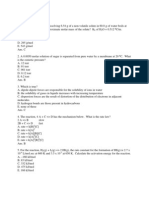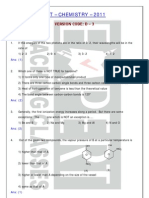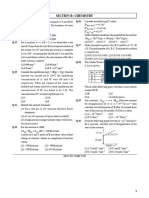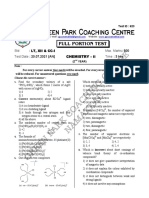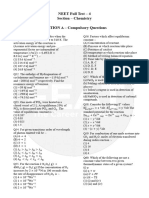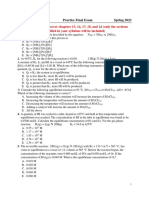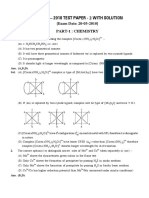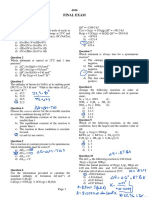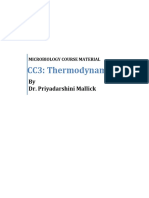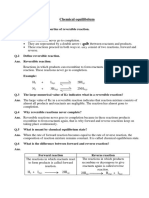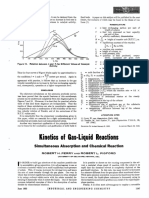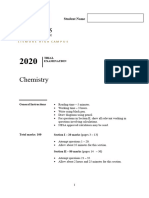0% found this document useful (0 votes)
16 views8 pagesAits R03
The document contains a series of chemistry questions covering various topics such as electronic configuration, thermodynamics, reaction kinetics, and chemical equilibrium. Each question presents multiple-choice answers related to fundamental concepts in chemistry. The questions are designed to test knowledge and understanding of chemical principles and calculations.
Uploaded by
narendra.verma770Copyright
© © All Rights Reserved
We take content rights seriously. If you suspect this is your content, claim it here.
Available Formats
Download as PDF, TXT or read online on Scribd
0% found this document useful (0 votes)
16 views8 pagesAits R03
The document contains a series of chemistry questions covering various topics such as electronic configuration, thermodynamics, reaction kinetics, and chemical equilibrium. Each question presents multiple-choice answers related to fundamental concepts in chemistry. The questions are designed to test knowledge and understanding of chemical principles and calculations.
Uploaded by
narendra.verma770Copyright
© © All Rights Reserved
We take content rights seriously. If you suspect this is your content, claim it here.
Available Formats
Download as PDF, TXT or read online on Scribd
/ 8










